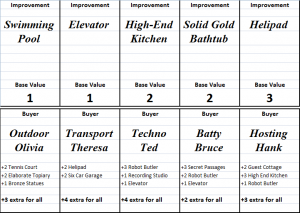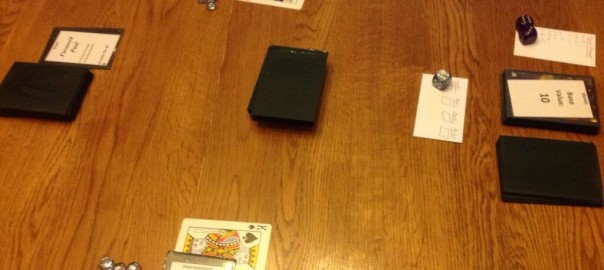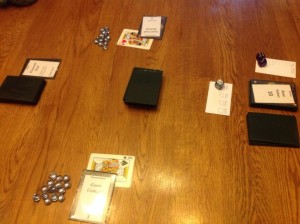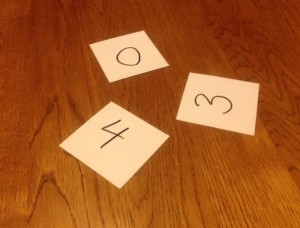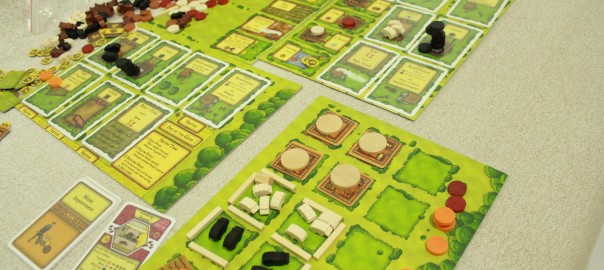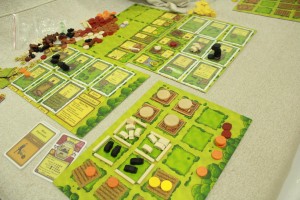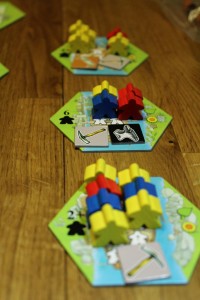I haven’t published any games since Otters in 2014, and that an intentional choice – game design and publication take a lot of time, and I have been devoting my time to other parts of my life.
However, I’m excited to announce that I’m working on a new game that I’ll be self-publishing. It’s called Fibercraft.

Fibercraft has two sources of inspiration. The theme is inspired by my wife Barbara’s business, Kitty Mine Crafts. The mechanics are inspired by an old Magic: The Gathering draft style that I don’t believe is used much anymore, called Winston Draft.
Fibercraft is about operating a business where you dye and sell various types of yarn and fiber (wool, alpaca, silk) to people who want to knit or crochet or spin or felt or whatever. This is what my wife has been doing for the past five years, and she’s built it into a successful business. The products are really pretty, and it sounded fun to me to make a game that would cross over with her shop.

The mechanics are inspired by a two-player Magic: The Gathering draft style known as Winston Draft. The idea is that there are three piles of cards to choose from, and on your turn you will look at the first pile and either take it or pass. If you take it, your turn is over, and you put one card from the deck in that pile’s place for your opponent to look at. If you pass, you put a card from the deck on top of the pile, and you then look at the second pile. You either take that one or pass. If you pass, add a card to it and look at the third pile. Take it or pass. If you pass, add a card to it, and take the top card of the deck.

The related inspiration here is 7 Wonders Duel, which is a two-player drafting game that my wife and I enjoy very much. Two-player drafting is just not a very common game type, and Duel does it so well. I liked the idea of something like Duel that wouldn’t take up so much table space and that would be a little more straightforward, so I decided on Winston Draft.

My first “proof of concept” playtest for Fibercraft was to take the 7 Wonders Duel cards and deal them out à la Winston Draft. I was pleased to discover that it worked pretty well! So, if you’re ever looking for a variant on 7 Wonders Duel, try Winston Drafting it instead of laying out the pyramid of cards.
I’ll write more about Fibercraft as the game development process moves along, but I’m pretty excited about it! I plan to self-publish this game in a manner very similar to the way I published Otters in 2014 – a Kickstarter campaign to cover the costs of doing a small print run. Nothing too fancy – I like to keep things simple.
If you enjoy games like 7 Wonders Duel and Patchwork, I think you’re going to like Fibercraft. That’s my goal!
Michael Iachini, Clay Crucible Games
@ClayCrucible on Twitter
